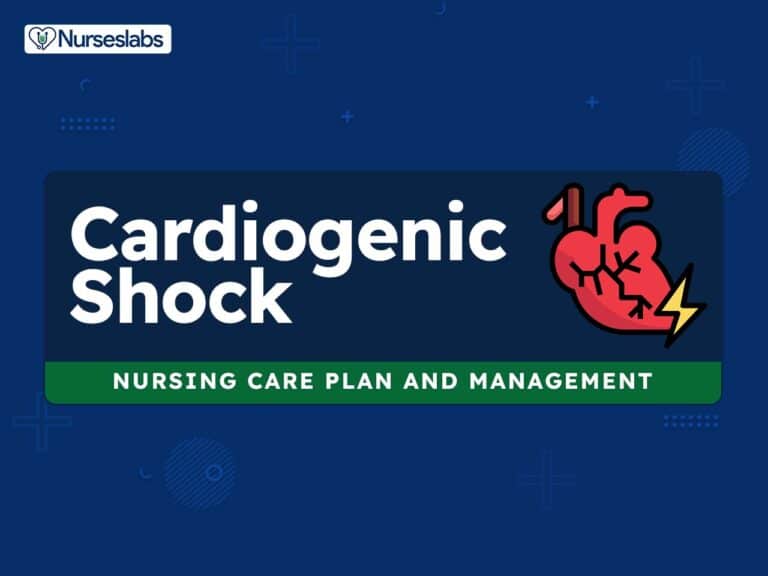

Nurses play a vital role in identifying and managing patients with cardiogenic shock, providing comprehensive care to stabilize hemodynamics and optimize cardiac function. This nursing care plan guide for cardiogenic shock serves as a valuable resource for developing effective nursing interventions and diagnosis to manage this critical condition.
Cardiogenic shock is a condition caused by the inability of the heart to pump blood sufficiently to meet the metabolic needs of the body due to the impaired contractility of the heart. Clients usually manifest signs of low cardiac output, with adequate intravascular volume. It is usually associated with myocardial infarction (MI), cardiomyopathies, dysrhythmias, valvular stenosis, massive pulmonary embolism, cardiac surgery, or cardiac tamponade. It is a self-perpetuating condition because coronary blood flow to the myocardium is compromised, causing further ischemia and ventricular dysfunction.
The nursing care plan for clients with cardiogenic shock involves carefully assessing the client, observing cardiac rhythm, monitoring hemodynamic parameters, monitoring fluid status, and adjusting medications and therapies based on the assessment data.
The following are the nursing priorities for patients with cardiogenic shock:
Proper nursing assessment allows for early identification of changes, facilitates monitoring of treatment response, aids in detecting complications, and provides essential information for effective care planning, intervention, and collaboration with the healthcare team.
Assess for the following subjective and objective data:
Assess for factors related to the cause of cardiogenic shock:
Here are some common nursing diagnosis for cardiogenic shock:
Goals and expected outcomes may include:
Therapeutic interventions and nursing actions for patients with cardiogenic shock may include:
Optimizing cardiac output is crucial in managing cardiogenic shock to prevent deterioration and improve hemodynamic stability. Implementing interventions like medication administration, fluid balance optimization, and vital sign monitoring enhances tissue perfusion and prevents complications.
1. Assess for any changes in the level of consciousness.
Restlessness and anxiety are early signs of cerebral hypoxia while confusion and loss of consciousness occur in the later stages. Older clients are especially susceptible to reduced perfusion to vital organs.
2. Assess the client’s HR, BP, and pulse pressure. Use direct intra-arterial monitoring as ordered.
Sinus tachycardia and increased arterial BP are seen in the early stages to maintain an adequate cardiac output. BP drops as the condition deteriorates. Auscultatory BP may be unreliable secondary to vasoconstriction. Pulse pressure (systolic minus diastolic) decreases in shock. Older clients have reduced response to catecholamines; thus their response to decreased cardiac output may be blunted, with less increase in HR.
3. Assess the cardiac rate, rhythm, and electrocardiogram (ECG).
Cardiac dysrhythmias may occur from low perfusion, acidosis, or hypoxia, as well as from side effects of cardiac medications used to treat this condition. The 12-lead ECG may provide evidence of myocardial ischemia (ST-segment and T-wave changes) or pericardial tamponade (decreased voltage of QRS complex).
4. Assess the heart sounds for gallops ( S3, S4).
S3 is a classic sign of left ventricular failure and is produced during passive left ventricular filling when blood strikes a compliant left ventricle. and S4 is associated with reduced ventricular compliance, which impairs diastolic filling.
5. Assess the central and peripheral pulses.
Pulses are weak, with diminished stroke volume and cardiac output.
6. Assess capillary refill.
Capillary refill is slow and sometimes absent.
7. Assess respiratory rate, rhythm, and auscultate breath sounds.
Characteristics of a shock include rapid, shallow respirations and adventitious breath sounds such as crackles and wheezes.
8. Administer IV fluids for clients with a decreased preload.
Optimal fluid status ensures effective ventricular filling pressure. Too little fluid reduces circulating blood volume and ventricular filling pressures; too much fluid can cause pulmonary edema in a failing heart. Pulmonary capillary wedge pressure guides therapy.
9. Administer medications as prescribed:
Medication therapy is more effective when initiated early. The goal is to maintain systolic BP greater than 90 or 100 mm Hg. See Pharmacologic Interventions.
Nurses play an important role in monitoring diagnostic procedures and laboratory studies for patients with cardiogenic shock, ensuring timely and accurate assessments to guide treatment decisions and optimize patient outcomes.
1. Monitor oxygen saturation using pulse oximetry.
Pulse oximetry is used in measuring oxygenation concentration. The normal oxygen saturation should be maintained at 90% or higher.
2. Monitor arterial blood gases.
Increasing PCO2 and decreased PaO2 are signs of hypoxemia and respiratory acidosis. As the client’s condition begins to fail, the respiratory rate will decrease and PaCO2 will continue to increase.
3. Monitor the client’s central venous pressure (CVP), pulmonary artery diastolic pressure (PADP), pulmonary capillary wedge pressure, and cardiac output/cardiac index.
CVP provides information on filling pressures of the right side of the heart; pulmonary artery diastolic pressure and pulmonary capillary wedge pressure reflect left-sided fluid volumes. The cardiac output provides an objective number to guide therapy.
4. Monitor the following laboratory: Magnesium and Potassium
Hypomagnesemia and Hypokalemia can lead to the development of dysrhythmias which can further reduce cardiac output.
Optimizing oxygenation and gas exchange is vital in patients with compromised cardiac function, as it prevents hypoxemia and improves tissue oxygenation, requiring interventions such as supplemental oxygen, ventilation optimization, and respiratory status monitoring to enhance outcomes.
1. Assess the client’s respiratory rate, rhythm, and depth.
During the early stages of shock, the client’s respiratory rate will be increased due to hypercapnia and hypoxia. Once the shock progresses, the respirations become shallow, and the client will begin hyperventilating. Respiratory failure develops as the client experiences respiratory muscle fatigue and decreased lung compliance.
2. Assess the client’s heart rate and blood pressure.
As shock progresses, the client’s blood pressure and heart rate will decrease and dysrhythmias may occur.
3. Assess for any signs of changes in the level of consciousness.
Headache and restlessness are early signs of hypoxia.
4. Auscultate the lung for areas of decreased ventilation and the presence of adventitious sounds.
Moist crackles are caused by increased pulmonary capillary permeability and increased intra-alveolar edema.
5. Assess for cyanosis or pallor by examining the skin, nail beds, and mucous membranes.
Cool, pale skin may be secondary to a compensatory vasoconstrictive response to hypoxemia. Peripheral tissues become cyanotic due to impaired oxygenation and perfusion.
6. Assist the client when coughing, and suction the client when needed.
Suction removes secretions if the client is unable to effectively clear the airway.
7. Place the client’s head of the bed elevated.
This position facilitates optimal ventilation.
8. Administer oxygen as ordered.
Supplemental oxygen may be required to maintain PaO2 at an acceptable level.
9. Prepare the client for mechanical ventilation if oxygen therapy is ineffective.
Early intubation and mechanical ventilation are recommended to prevent full decompensation of the client. Mechanical ventilation provides supportive care to maintain adequate oxygenation and ventilation for the client.
Optimizing tissue perfusion is critical in cardiogenic shock to prevent tissue ischemia, organ failure, and improve patient outcomes through interventions like fluid balance optimization, medication administration, and close monitoring of vital signs.
1. Assess the client’s HR, BP, and pulse pressure. Use direct intra-arterial monitoring as ordered.
Sinus tachycardia and increased arterial BP are seen in the early stages to maintain an adequate cardiac output. BP drops as the condition deteriorates. Auscultatory BP may be unreliable secondary to vasoconstriction. Pulse pressure (systolic minus diastolic) decreases in shock.
2. Assess for any changes in the level of consciousness.
Restlessness and anxiety are early signs of cerebral hypoxia while confusion and loss of consciousness occur in the later stages.
3. Assess capillary refill.
Capillary refill is slow and sometimes absent.
4. Monitor oxygen saturation and arterial blood gases.
Pulse oximetry is used in measuring oxygenation concentration. The normal oxygen saturation should be maintained at 90% or higher. As shock progresses, aerobic metabolism stops and lactic acidosis occurs, resulting in an increased level of carbon dioxide and decreasing pH.
5. Restrict the patient’s activity, and maintain the client on bed rest.
Minimize oxygen demand by maintaining bed rest and limiting the client’s activity.
6. Provide oxygen therapy as indicated.
Oxygen is administered to increase the amount of oxygen carried by available hemoglobin in the blood.
7. Administer IV fluids as ordered.
Sufficient fluid intake maintains adequate filling pressures and optimizes cardiac output needed for tissue perfusion.
Administering medications and pharmacological interventions in cardiogenic shock improves cardiac output, reduces cardiac workload, and prevents complications like arrhythmias. Inotropes, vasodilators, diuretics, and antiarrhythmics help enhance cardiac function, alleviate fluid overload, and manage arrhythmias.
1. Antidysrhythmics
Antidysrhythmics are used when cardiac anti dysrhythmias are further compromising a low output state.
2. Diuretics
Diuretics are used when volume overload is contributing to pump failure.
3. Inotropes
4. Morphine
Morphine decreases pain, which reduces sympathetic stress and provides some preload reduction.
5. Vasodilators
Proper management of fluid and electrolyte imbalances in patients with cardiogenic shock is crucial to prevent complications and optimize tissue perfusion. Close monitoring and timely interventions, such as administering diuretics and correcting imbalances, play a vital role in maintaining stability and promoting the patient’s survival and recovery.
1. Monitor urine output, and observe its color and amount.
Urine output may be concentrated and scanty due to decreased renal perfusion.
2. Auscultate the lung for the presence of adventitious breath sounds such as crackles, and wheezing. Note for the presence of cough, dyspnea, or orthopnea.
These may indicate pulmonary edema from worsening pulmonary congestion and intervention must be done immediately.
3. Monitor client’s intake and output.
Decreased cardiac output may lead to decreased renal perfusion and impairment with excess fluid volume which causes water and sodium retention and oliguria.
4. Assess for edema.
Edema (usually pitting edema) starts in the feet and ankles and gradually leads to weight gain.
5. Assess fluid balance and weight gain.
Fluid and sodium retention occurs due to compromised regulatory mechanisms. Body weight is used to detect response to diuretic therapy.
6. Assess for distended neck veins.
Jugular vein distention may indicate fluid excess.
7. Monitor the client’s electrolyte levels esp. potassium.
Hypokalemia can occur since diuretics promote renal potassium secretion.
8. Monitor the client’s chest x-ray.
Review chest radiographs to evaluate the client’s progress or a worsening lung condition.
9. Place the client in a semi-Fowler’s position.
Semi-fowler’s position increases renal filtration and decreases the production of ADH thus promoting diuresis. Placing the client in semi-Fowler’s position can also help with lung expansion and ventilation caused by pulmonary congestion.
10. Frequently change the client’s position at least every 2 hours.
Repositioning promotes enhanced breathing and decreases pressure ulcers and mobilization of secretions.
11. Instruct the client to have a low-sodium diet.
A low-sodium diet can decrease fluid and electrolyte retention. Sodium helps regulate fluid balance by retaining water in the bloodstream. When sodium levels are high, the body retains more fluid, leading to fluid accumulation in the tissues.
12. Administer diuretics (e.g., furosemide) as indicated.
Diuretics decrease plasma volume and peripheral edema. Monitor for potential adverse effects of diuretics, such as fluid and electrolyte imbalances. See Providing Pharmacological Interventions
Providing perioperative nursing care for patients with cardiogenic shock is crucial in promoting hemodynamic stability, preventing surgical complications, and enhancing overall health outcomes by implementing interventions like vital signs monitoring, fluid and electrolyte balance management, and optimizing cardiac output through medication administration.
1. Institute an intra-aortic balloon pump (IABP) or ventricular assist device (VAD) if mechanical assistance by counterpulsation is indicated.
Mechanical assist devices such as VAD or IABP temporarily help the pumping action of the heart in order to improve cardiac output. These devices are used for clients who do not respond to medical management. IABP increases myocardial oxygen supply and decreases myocardial workload through increased coronary artery perfusion. The client’s stroke volume increases thereby improving perfusion to the vital organs.
2. Prepare the client for surgical intervention if ordered.
Acute valvular problems or septal defects often require surgical treatment.
Reducing anxiety in patients with cardiogenic shock is vital for promoting hemodynamic stability, preventing complications like arrhythmias, and improving overall health outcomes, and this can be achieved through nursing interventions such as providing emotional support, administering anxiety-reducing medications, and creating a calm environment.
1. Assess previous coping mechanisms used.
Anxiety and ways of decreasing perceived anxiety are highly individualized. Interventions are most effective when they are consistent with the client’s established coping pattern. However, in the acute care setting these techniques may no longer be feasible.
2. Assess the client’s level of anxiety.
Shock can result in an acute life-threatening situation that will produce high levels of anxiety in the client as well as in significant others.
3. Explain all procedures as appropriate, keeping explanations basic.
This information helps reduce anxiety. Anxious clients are unable to understand anything more than simple, clear, brief instructions.
4. Encourage the client to verbalize their feelings.
Talking about anxiety-producing situations and anxious feelings can help the client perceive the situation in a less threatening manner.
5. Acknowledge awareness of the client’s anxiety.
Acknowledgment of the client’s feelings validates the client’s feelings and communicates acceptance of those feelings.
6. Reduce unnecessary external stimuli by maintaining a quiet environment. If medical equipment is a source of anxiety, consider providing sedation to the client.
Anxiety may escalate with excessive conversation, noise, and equipment around the client.
7. Maintain a confident, assured manner while interacting with the client. Assure the client and significant others of close, continuous monitoring that will ensure prompt intervention.
The staff’s anxiety may be easily perceived by the client. The client’s feeling of stability increases in a calm and non-threatening atmosphere. The presence of a trusted person may help the client feel less threatened.
Expected outcomes include:
Lifestyle changes must be made to avoid the recurrence of cardiogenic shock.
The focus of documentation include:
Recommended nursing diagnosis and nursing care plan books and resources.
Disclosure: Included below are affiliate links from Amazon at no additional cost from you. We may earn a small commission from your purchase. For more information, check out our privacy policy.
Ackley and Ladwig’s Nursing Diagnosis Handbook: An Evidence-Based Guide to Planning Care
We love this book because of its evidence-based approach to nursing interventions. This care plan handbook uses an easy, three-step system to guide you through client assessment, nursing diagnosis, and care planning. Includes step-by-step instructions showing how to implement care and evaluate outcomes, and help you build skills in diagnostic reasoning and critical thinking.
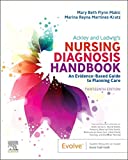
Nursing Care Plans – Nursing Diagnosis & Intervention (10th Edition)
Includes over two hundred care plans that reflect the most recent evidence-based guidelines. New to this edition are ICNP diagnoses, care plans on LGBTQ health issues, and on electrolytes and acid-base balance.
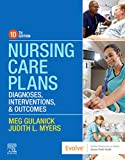
Nurse’s Pocket Guide: Diagnoses, Prioritized Interventions, and Rationales
Quick-reference tool includes all you need to identify the correct diagnoses for efficient patient care planning. The sixteenth edition includes the most recent nursing diagnoses and interventions and an alphabetized listing of nursing diagnoses covering more than 400 disorders.

Nursing Diagnosis Manual: Planning, Individualizing, and Documenting Client Care
Identify interventions to plan, individualize, and document care for more than 800 diseases and disorders. Only in the Nursing Diagnosis Manual will you find for each diagnosis subjectively and objectively – sample clinical applications, prioritized action/interventions with rationales – a documentation section, and much more!
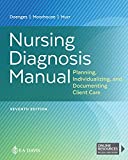
All-in-One Nursing Care Planning Resource – E-Book: Medical-Surgical, Pediatric, Maternity, and Psychiatric-Mental Health
Includes over 100 care plans for medical-surgical, maternity/OB, pediatrics, and psychiatric and mental health. Interprofessional “patient problems” focus familiarizes you with how to speak to patients.
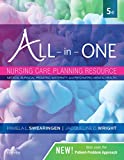
Other recommended site resources for this nursing care plan:
Other care plans for hematologic and lymphatic system disorders:
Paul Martin R.N. brings his wealth of experience from five years as a medical-surgical nurse to his role as a nursing instructor and writer for Nurseslabs, where he shares his expertise in nursing management, emergency care, critical care, infection control, and public health to help students and nurses become the best version of themselves and elevate the nursing profession.